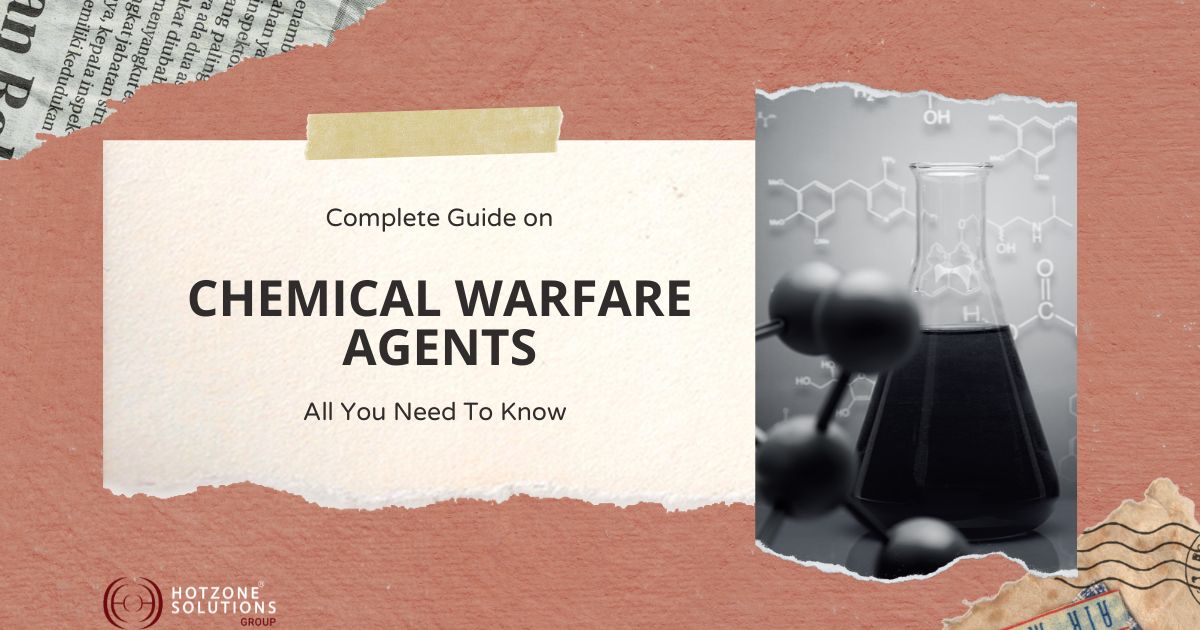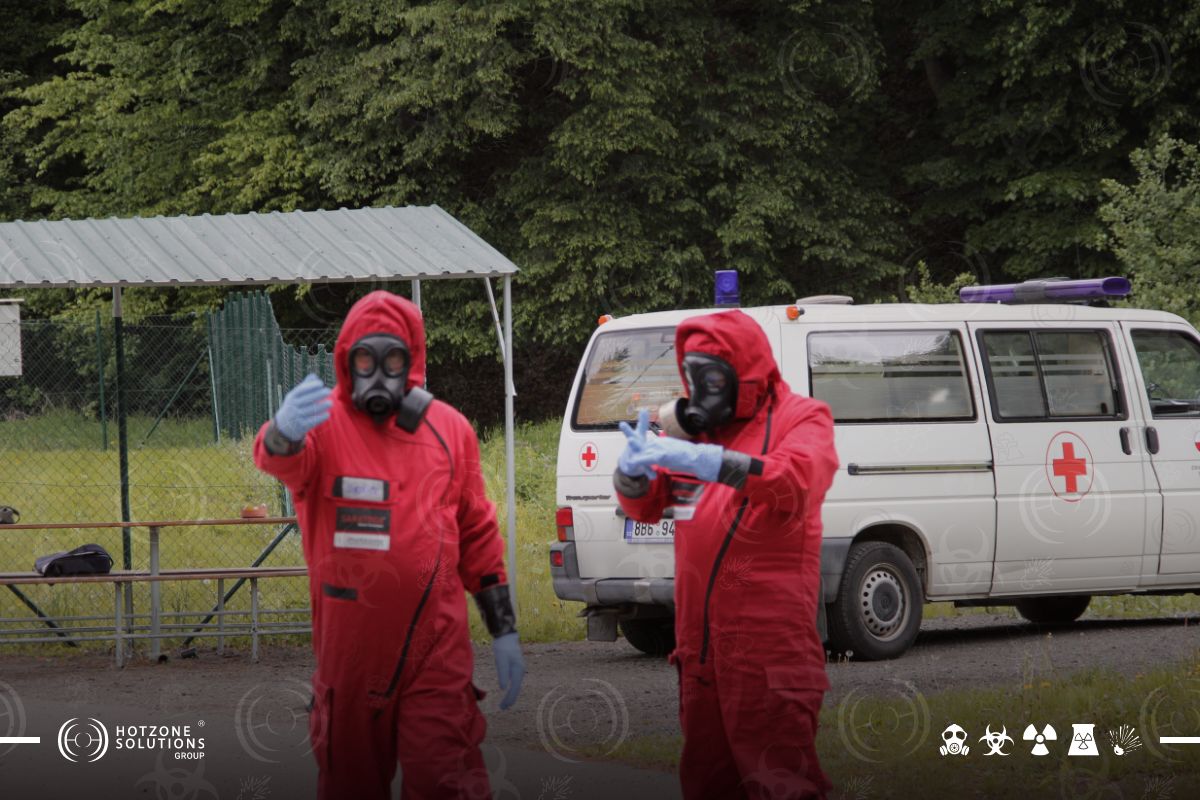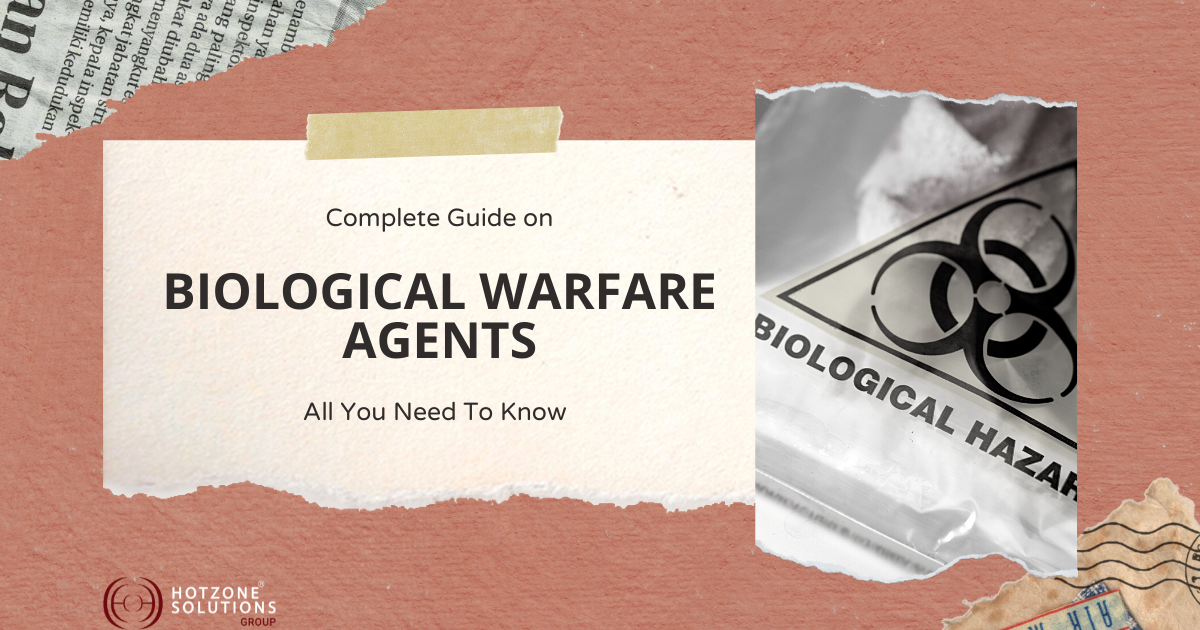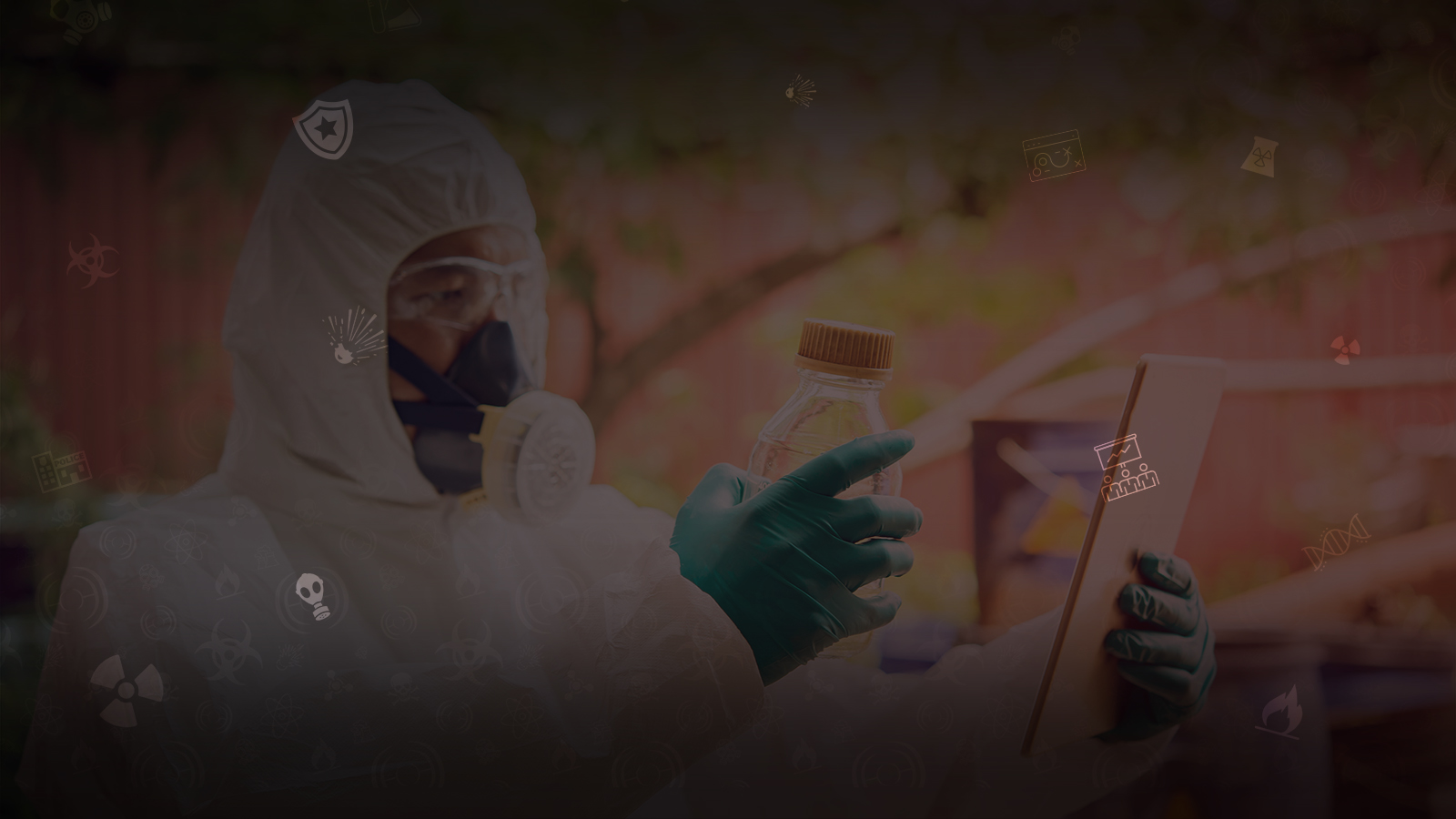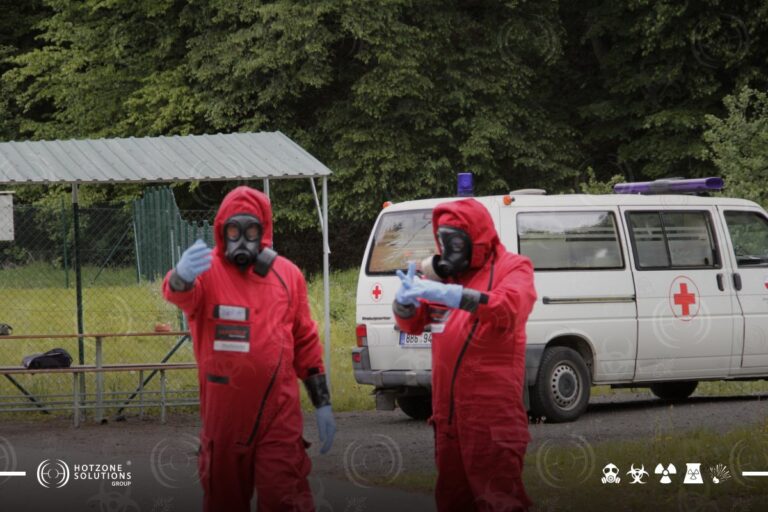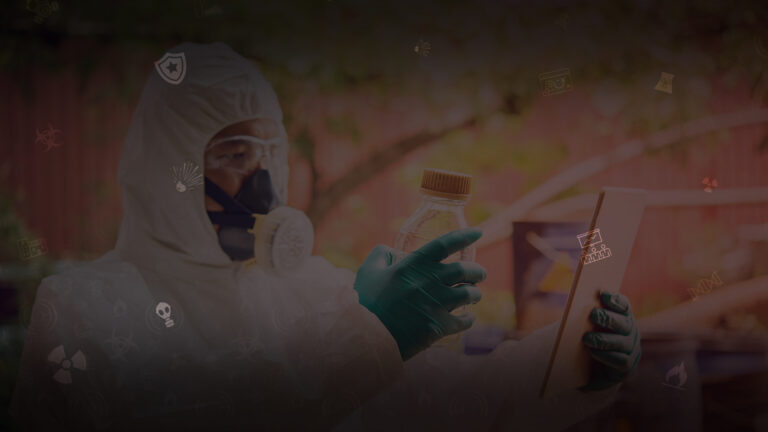Chemical warfare agents (CWA) are extremely toxic chemicals initially intended through their chemical action on life processes to cause death, temporary incapacitation, or permanent harm to humans or animals. They are delivered through various means, in form of gases, vapours, liquids, or solids.
“The use of chemical weapons is a grave violation of international law and a threat to international peace and security. The consequences of their use are devastating and long-lasting, both for the individuals directly affected and for the broader community.”
The Organization for the Prohibition of Chemical Weapons (OPCW)
Generally, international treaties, including the most stringent Chemical Weapons Convention (CWC), prohibit the use, possession, development, production, acquiring, stockpiling, or retaining of chemical weapons or chemical warfare agents.
Also, even before the CWC, national governments strictly controlled their development, and now, national legislation restricts the usage of these chemicals (particularly ones belonging to the Schedules of the CWC) only for some controlled peaceful purposes.
What are the Chemical Warfare Agents (CWA)
A Chemical weapon, or CW, is a type of Weapons of Mass Destruction known, among else, for its brutality. Relatively, it is cheap and easy to produce, making it a potential threat even from small terrorist groups. Chemical weapon involves the use of toxic chemicals to harm or kill individuals.
“Chemical warfare is a particularly brutal form of aggression, in which innocent civilians, including women and children, suffer the most. Its effects can last long after the conflict ends, causing physical and psychological harm to survivors and future generations.”
International Committee of the Red Cross
Toxic chemicals that are specifically designed to be used as CW, and do not have almost any other purpose, are mostly defined as Chemical Warfare Agents (CWA) and belong to Schedule 1 of the CWC.
These chemicals can be dispersed through various ways, such as:
- Spraying them from aircraft.
- Delivering them through missiles, artillery shells, bombs, or other munition types.
- Dispersing/Releasing them into the water supply as part of terrorist activity.
- Other dispersal ways.
Chemical warfare agents can affect the body in a variety of ways, from skin irritation, causing respiratory problems, blindness, and other tissue and organs failures to cancer or lethal outcomes.
One of the major concerns with chemical warfare agents is that they are relatively cheap and easy to produce in comparison to other WMDs. This means that even small, non-state groups can potentially obtain and use some of these agents, making them a significant threat to global security.
Protection against chemical attacks
1- Physical protection methods
They include wearing protective clothing and using respiratory protection equipment.
2- Medical countermeasures methods
They involve administering treatments, such as antidotes, to counteract the effects of the chemical warfare agents exposure.
Detection Equipment
It is an important aspect of responding to chemical attacks. This can include devices that can detect and/or identify the presence of specific chemical agent(s) in the air, liquids/solids or on surfaces.
Decontamination Techniques
Decontamination protocols are used to remove or neutralize chemical agents from surfaces (e.g. people’s skin, equipment, objects, and the environment). This can involve, among others, washing, using special chemical decontamination solutions/emulsions/foams, or thermal destruction of the chemicals.
The History of Use of Chemical Warfare Agents
The use of toxic chemicals has a long and tragic history, dating back to ancient times. The Geneva Protocol of 1925 was the first international treaty to prohibit the use of chemical and biological weapons, but it had certain shortcomings and was not effectively enforced, and chemical weapons continued to be used in conflicts around the world.
“The use of chemical weapons is a clear breach of international law and a crime against humanity. The consequences of such actions are devastating and long-lasting, both for the individuals directly affected and for the broader community.”
United Nations Office for Disarmament Affairs
The use of chemical warfare agents dates back to ancient times when toxic substances were used in battle.
In the Middle Ages, various toxic substances, including arsenic and other poison smokes, were also used in warfare.
Regretfully, the use of chemical warfare agents was not restricted to ancient and medieval times. These weapons have been used throughout history and continued to be used in Modern Era.
“The use of chemical weapons is abhorrent and has severe consequences for the victims, their families, and the broader community. These weapons cause unspeakable suffering and death, and their use is a clear violation of international law.”
Amnesty International
During the early modern era, the use of chemical warfare agents continued to be a part of warfare. In the 17th and 18th centuries, various toxic substances were used in conflicts around the world, including poisonous smokes and other chemicals.
The Chemical Weapons Convention (1997)
It is the current international treaty that prohibits the use, possession, development, production, acquiring, stockpiling, or retaining of chemical weapons. It has been signed by most countries (but 5) and has resulted in the destruction of the majority of the world’s declared chemical weapons stockpiles.
However, the use of chemical weapons has continued to occur in some conflicts, despite the treaty. The most notable recent examples are the use of chemical weapons in the Syrian Civil War, anthrax letters, VX assassination, Skripal case, Navalny case, usage of CW in Iraq-Iran war (not in chronological order). The international community has condemned the use of chemical weapons in this conflicts/events and has taken steps to hold those responsible accountable.
Historical Events where CWAs were used
Ancient times
Toxic substances such as arsenic and other poisonous smokes were used in warfare.
World War I
Chemical warfare became more widespread in World War I, with the use of poison gases such as chlorine and mustard gas. These weapons were used by both sides in the conflict and resulted in significant casualties.
Events after World War I
By the time World War I ended, the world had been introduced to chemical warfare on an unprecedented level. While some groups thought that humanity had learned a lesson about the cruel nature of chemical war- fare, others prudently went to work on improving chemical defenses (Vedder and Walton, 1925). The thoughts of many professional military officers were that future wars would be fought under the new paradigm of chemical warfare (Vedder and Walton, 1925; Vedder, 1926; Smart, 1997). New gas masks were developed, and training in chemical environments was introduced (Vedder and Walton, 1925; Vedder, 1926; Joy, 1997).
Handbook of Toxicology of Chemical Warfare Agents
edited by Ramesh C. Gupta
World War II
Chemical weapons were again used in World War II, but in a more limited scope and not by most. One of the most infamous example is the use of poison gas by the Japanese in their invasion of China, including the infamous attack on the Chinese city of Changed, where mustard gas was used.
“The use of chemical warfare in World War II was a horrific and deadly aspect of the conflict. It caused suffering and death on a massive scale, and its effects were felt long after the war ended. The use of these weapons is a clear violation of international law and a crime against humanity.”
United States Holocaust Memorial Museum
“The use of chemical weapons in World War I and II had a profound impact on the way in which warfare is perceived and conducted. It led to the development of international treaties and conventions to prevent their use in future conflicts.”
Mark Wheelis, researcher at the University of California, Davis
Iran-Iraq War
During the 1980s, both Iran and Iraq used chemical weapons against each other and their civilian populations. Iraq, in particular, used chemical weapons extensively against Iran and its Kurdish population.
Syrian Civil War
The use of chemical weapons has been a particularly controversial aspect of the Syrian Civil War. There have been numerous allegations of the use of chemical weapons by the Syrian government and its allies, as well as by non-state actors such as ISIS. The international community has condemned the use of chemical weapons in this conflict and has taken steps to hold those responsible accountable.
Types of Chemical Warfare Agents
Chemical warfare agents are substances used in military operations to harm or incapacitate people. CWAs are classified, by their mechanism of action, into the following main categories; nerve agents, blister agents, choking agents, blood agents, incapacitating, and riot-control agents.
In general, chemical warfare agents can be extremely hazardous and can cause extensive damage to people and the environment.
The use of chemical weapons is a violation of international law and a crime against humanity. The consequences of their use are devastating and long-lasting, causing suffering and death to innocent civilians.”
Ban Ki-moon, former Secretary-General of the United Nations
1. Nerve Agents
Nerve agents are highly toxic chemicals that disrupt the transmission of nerve impulses in the body. They are often odourless and tasteless and can be absorbed through the skin, inhaled, or ingested.
“Nerve agents are the most toxic and rapidly acting of the known chemical warfare agents. They are organic phosphorous compounds that interfere with the transmission of nerve impulses in the body, causing loss of muscle control, respiratory failure, and death.”
World Health Organization
Nerve agents include chemicals such as:
- Sarin.
- VX.
- Soman.
Nerve agents mostly belong to a class of chemicals known as organophosphates, which inhibit the action of an enzyme called acetylcholinesterase. This enzyme is responsible for breaking down acetylcholine, a neurotransmitter that is involved in the transmission of nerve impulses.
When nerve agents inhibit the action of acetylcholinesterase, acetylcholine accumulates in the body, leading to overstimulation of the nerves and muscles.
The effects of nerve agents depend, among others, on the dose and the route of exposure.
Low doses of nerve agents can cause symptoms such as:
- Headache,
- Dizziness,
- Nausea, and vomiting.
Higher doses can cause more severe symptoms such as:
- Difficulty breathing,
- Muscle spasms,
- and paralysis.
In extreme doses, nerve agents can be deadly.
There are several specific antidotes for nerve agent poisoning, and additional supportive treatments including:
- Atropine, a medication that blocks the effects of acetylcholine to treat symptoms such as difficulty breathing and muscle spasms.
- Oximes reactivate acetylcholinesterase by removing the phosphoryl group
- Benzodiazepines, a class of sedative medications, treat seizures and other CNS effects.
- Oxygen therapy helps with breathing.
- Also, there are other medications may be given to support blood pressure and other vital functions.
2. Blister Agents
Blister agents, also known as vesicants, are chemicals that act through disrupting the cellular walls, damaging DNA and other cellular components, and causing severe skin irritation and blistering. They can be inhaled or absorbed through the skin.
“Blister agents, also known as vesicants, are chemicals that cause severe skin, eye, and mucosal irritation and damage. They can also damage the respiratory tract and other internal organs. Blister agents are usually liquids that can evaporate into a vapor (gas) and spread easily in the air. Examples of blister agents include sulfur mustard, nitrogen mustard, and lewisite.”
National Institute of Environmental Health Sciences
Examples of blister agents include:
- Sulfur Mustard (Mustard Gas)
- Lewisite.
They belong to a class of chemicals known as alkylating agents. When the skin is exposed to a blister agent, the chemical reacts with the skin cells, leading to inflammation and the formation of blisters.
The effects of blister agents depend, among else, on the dose and the route of exposure:
- Low doses of blister agents can cause symptoms such as skin irritation and redness.
- Higher doses can cause more severe symptoms such as blistering, ulceration, and scarring.
- In extreme doses, blister agents can be deadly.
There is no specific antidote for blister agent poisoning, and treatment is largely supportive:
- Decontamination of the affected area is important to prevent further absorption of the chemical.
- Topical medications and dressings are used to treat the skin irritation and blistering.
- Pain medications may be given for pain and discomfort.
- In severe cases, hospitalization may be necessary for further treatment and monitoring.
- Long-term cancerogenic effects also might need to be monitored/treated.
3. Blood Agents
Blood agents are chemicals that interfere with the body’s ability to utilize oxygen, leading to suffocation. They mostly cause a toxic effect through inhalation.
“Blood agents have been used as weapons of war and terrorism in several conflicts, including World War I and the Iran-Iraq War. They have also been used in terrorist attacks…”
Centers for Disease Control and Prevention
Examples of blood agents include:
- Hydrogen Cyanide
- Chloro cyanide.
They work by inhibiting the action of enzymes that are involved in the transport of oxygen in the body by red blood cells. When the body is exposed to a blood agent, the chemical reacts with the enzymes, disrupting the normal process of oxygen utilization and leading to a deficiency of oxygen in the body.
The effects of blood agents depend, mostly, on the dose:
- Low doses of blood agents can cause symptoms such as headache, dizziness, and nausea.
- Higher doses can cause more severe symptoms such as convulsions, loss of consciousness, and death.
There is no specific antidote for blood agent poisoning, and treatment is largely supportive:
- Decontamination of the affected area is important to prevent further absorption of the chemical.
- Oxygen therapy is often used to help restore oxygen levels in the body.
- Medications may be given to support vital functions.
- In severe cases, hospitalization may be necessary for further treatment and monitoring.
4. Choking agents
Choking agents are chemicals that cause inflammation and swelling of the mucous membranes in the respiratory system, leading to difficulty breathing. They mostly cause toxic effect through inhalation.
Examples of choking agents include:
- Phosgene.
- Chloropicrin.
When the body is exposed to a choking agent, the chemical reacts with the cells in the respiratory tract, causing swelling and narrowing of the airways.
OPCW (Organization for the Prohibition of Chemical Weapons) defines choking agents as follows:
Agents inflicting injury mainly on the respiratory tract, choking agents irritate the nose, throat, and especially the lungs. When inhaled, these agents cause alveoli, air sacs in the lungs, to secrete fluid, essentially drowning those affected
The effects of choking agents depend mostly on the dose:
- Low doses of choking agents can cause symptoms such as coughing, difficulty breathing, and chest tightness.
- Higher doses can cause more severe symptoms such as pulmonary edema (fluid accumulation in the lungs), respiratory failure, and death.
There is no specific antidote for choking agent poisoning, and treatment is largely supportive:
- Decontamination of the affected area is important to prevent further absorption of the chemical.
- Oxygen therapy is often used to help restore oxygen levels in the body.
- Medications may be given to support other vital functions.
- In severe cases, hospitalization may be necessary for further treatment and monitoring.
5. Incapacitating agents
Incapacitating agents are chemicals that cause hallucinations, confusion, and other psychological effects, rendering individuals unable to function normally. They mostly cause intoxication through inhalation.
Examples of incapacitating agents include:
- BZ
- LSD.
They work by disrupting the normal functioning of the central nervous system (CNS) leading to a range of psychological and neurological effects.
The effects of incapacitating agents depend mostly on the dose :
- Low doses of incapacitating agents can cause symptoms such as hallucinations, confusion, and disorientation.
- Higher doses can cause more severe symptoms such as delirium, coma, and death.
There is no specific antidote for incapacitating agent poisoning, and treatment is largely supportive:
- Decontamination of the affected area is important to prevent further absorption of the chemical.
- Symptomatic treatment may be used to manage the psychological and neurological effects of the chemical.
- Medications may be given to support other vital functions.
- In severe cases, hospitalization may be necessary for further treatment and monitoring.
Important Things to Know about Chemical Warfare Agents (CWA)
There are several things that the public should know about chemical warfare agents to protect themselves in the event of an attack.
1. Chemical Warfare Agents can be lethal
Many chemical warfare agents are highly toxic and lethal even in small doses. So, be aware of the potential risks associated with these chemicals to take steps to protect yourself.
2. Chemical Warfare Agents can be difficult to detect
Many chemical warfare agents are odourless and tasteless, which can make them difficult to sense the release/exposure.
It is important to be aware of the potential signs of chemical warfare agent exposure, such as unusual odours (if any) or physical symptoms, and to seek shelter and medical attention if necessary.
3. Chemical Warfare Agents can be dispersed in a variety of ways
Chemical warfare agents can be dispersed through the air, in water, or by contact with contaminated surfaces, thus allowing different exposure pathways.
4. Chemical Warfare Agents can have long-term effects
Chemical warfare agents tend to have immediate effects. However, there is also a risk of long-term effects such as cancer and other health problems. Therefore, it’s important to seek medical attention if you suspect that you have been exposed to a chemical warfare agent.
5. International Law prohibited Chemical Warfare Agents
Each individual needs to support efforts to prevent the use of these weapons and to hold those who use them accountable.
Symptoms of Chemical Warfare Agent’s Attack
“Symptoms of chemical warfare agents can range from mild to severe and can include respiratory problems, skin irritation, and vision problems. In severe cases, chemical warfare agents can cause death.”
(https://www.medicinenet.com/chemical_warfare_agents/article.htm)
The symptoms of exposure to chemical warfare agents can vary depending on the specific agent and the dose. However, some common symptoms that may be experienced include:
- Difficulty breathing: Many chemical warfare agents can cause respiratory problems, leading to difficulty breathing, coughing, and chest tightness.
- Skin irritation: Some chemical warfare agents, such as blister agents, can cause severe skin irritation and blistering.
- Redness of the eyes: Some chemical warfare agents can cause redness and irritation of the eyes.
- Nausea and vomiting: Some chemical warfare agents can cause nausea and vomiting.
- Headache: Many chemical warfare agents can cause headache.
- Dizziness: Some chemical warfare agents can cause dizziness and disorientation.
- Convulsions: Some chemical warfare agents can cause seizures and other CNS effects.
- Coma: In severe cases, chemical warfare agent poisoning can cause coma or even death.
Note that these symptoms can also be caused by other factors. Also, it is not always possible to determine the presence of a chemical warfare agent based on these symptoms alone. If you suspect that you have been exposed to a chemical warfare agent, seek medical attention as soon as possible.
What to Do in Case of a Chemical Warfare Agents’ Terrorist Attack
In the event of a chemical warfare agent terrorist attack, follow these steps to protect yourself:
1. Seek Shelter
If you are outdoors, seek shelter immediately. If you are indoors, close all windows and doors and turn off any air conditioning or ventilation systems to prevent the chemical from entering the building.
2. Remove Contaminated Clothing
Clothing that has been exposed to a chemical warfare agent can continue to release the chemical, even after the initial exposure.
3. Decontaminate
If you have been exposed to a chemical warfare agent, quickly decontaminate to prevent further absorption of the chemical. This can be done by washing the affected area with soap and water.
4. Seek Medical Attention
The symptoms of chemical warfare agent poisoning can be treated, but it is important to receive treatment as soon as possible to minimize the risk of long-term effects.
It is important to remain calm and follow the instructions of authorities in the event of a chemical warfare agent terrorist attack. Stay informed by listening to local news and following any evacuation or shelter-in-place orders that may be issued.
Hotzone Solutions Role in Raising Awareness against CWA
Hotzone Solutions is a company that provides training and consulting services related to the prevention and management of chemical, biological, and radiological incidents. The company offers a range of training programs on response to chemical warfare agents’ release, including courses on the:
- Detection and identification of chemical warfare agents.
- Decontamination procedures.
- Use of personal protective equipment (PPE).
The specific content of Hotzone Solutions‘ training programs concerning chemical warfare agents may vary, but they generally aim to provide individuals with the knowledge and skills necessary to protect themselves and others in the event of a chemical warfare agent incident.
This may include training on the properties and effects of different chemical warfare agents, the proper use of PPE, and decontamination procedures.
The training provided by Hotzone Solutions is designed for a variety of audiences, including first responders, military personnel, and other professionals who may be called upon to respond to a chemical warfare agent incident. It includes all levels from basic individual to complex team and command levels.
The company’s training programs are based on current best practices and are designed to help individuals and teams stay safe and effective in the face of these types of incidents.
References:
[1] Argonne National Laboratory. 1994. Personal Protective Equipment for the Chemical Stockpile Emergency Preparedness Program: A Status Report. Argonne, IL: Argonne National Laboratory.
[2] Smart JK. History of Chemical and Biological Warfare: An American Perspective. In: Sidell FR, Takafuji ET, Franz DR, editors. Medical Aspects of Chemical and Biological Warfare. Washington, DC: Office of the Surgeon General; 1997.
[3] Somani SM. Chemical Warfare Agents. USA: Academic Press Inc; 1992.
[4] 43. Marrs TC, Robert LM, Frederick RS. Chemical warfare agents: Toxicology and treatment. Chichester, England: John Wiley and Sons; 1997.

